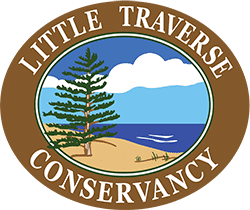
Eastern hemlock trees hold innate magic. If you don’t believe me, walk beneath a canopy of them. You’ll know.
Hemlocks have a remarkable ability to ground you in the present. Their needles, dark and glossy, mute sunlight and sound, and to step under them is to be pulled into a perpetual, green-tinted twilight. Underneath their boughs, the outside becomes distant, unimportant. The hemlocks quietly ask for you to listen, and, under the gentle swaying of their elegant branches, you can only oblige. It is the least you can do in the presence of such grandeur.
If we listen, we will hear there is more we can do for the hemlock. Like our beautiful ashes, beeches, and chestnuts, hemlocks are at risk for decline, and an invasive insect is to blame. Hemlock woolly adelgid was first introduced to North America in the 1920s and has claimed vast eastern hemlocks across the eastern U.S. and Appalachia since. Hemlock woolly adelgid kills hemlocks by eagerly slurping the sap that flows between the hemlocks’ needles and branches. Deprived of adequate nutrition, the needles turn gray-green before falling bleakly to the forest floor. Eventually, the hemlock is left without enough needles to photosynthesize energy for survival. For a few years, the hemlock starves to death.
In the Great Smoky Mountains National Park, hemlock woolly adelgid is estimated to have caused 85% of the park’s hemlocks to die or severe decline in its 87,000 acres of hemlock forest. When I stand under a hemlock tree and look up, I find the most pleasing shade of emerald the world has to offer. I’ve seen pictures of what hemlock forests infested with hemlock woolly adelgid look like. There is no glimmering emerald, just dead, rotting wood.
We are lucky in Charlevoix and Emmet County not yet have any known infestations of hemlock woolly adelgid. For now, it seems our hemlocks are safe. However, hemlock woolly adelgid was identified as far north as Benzie County in early 2021. With hemlock woolly adelgid being a notorious hitchhiker on migrating birds, it feels like it’s only a matter of time before finding it in our region. Despite hemlock woolly adelgid’s inevitable arrival, or perhaps despite it, we can, and should, take action to protect our hemlocks.
In late winter, hemlock woolly adelgid is at its most noticeable and vulnerable. Hemlock woolly adelgid makes itself known by leaving tiny, white, cotton-like balls at the base of hemlock needles, lining its branches like a string of toxic pearls. Early detection of these pests is critical for the long-term viability of our hemlocks, as conservationists may be able to isolate and eradicate the pests before they take over. Over the past two years, I have become acquainted with the hemlocks of Menonaqua Woods, Bissell, Fischer, Kalman, Hoogland, Five Mile Creek, and J.W. Fischer nature preserves on behalf of the Little Traverse Conservancy. I’ve also come across owls, woodpeckers, deer, coyotes, rabbits, and eagles during my search for hemlock woolly adelgid. Between encountering wildlife and protecting hemlocks, there are few better ways to spend an afternoon.
If you are concerned about the threat hemlock woolly adelgid poses to our hemlocks, consider emailing cacia@landtrust.org to be added to the hemlock survey volunteer list. Little Traverse Conservancy will train anyone who cares about our hemlocks to become expert hemlock and hemlock woolly adelgid identifiers. Be sure that the next time you find yourself under a whispering canopy of hemlocks and they quietly ask for your attention, listen. Listen, because they might not be around much longer to ask unless we do something.
https://www.nps.gov/grsm/learn/nature/hemlock-woolly-adelgid.htm
